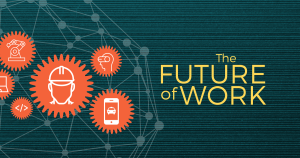Introduction Many organizations use AI to automate tasks, but few tap into AI’s full reasoning power. Chain of thought AI reasoning goes beyond one-step prompts. It guides AI models to “think out loud,” revealing intermediate steps that lead to smarter decisions. In 2025, businesses that master chain-of-thought prompting will boost productivity, reduce errors, and gain
Introduction
Many organizations use AI to automate tasks, but few tap into AI’s full reasoning power. Chain of thought AI reasoning goes beyond one-step prompts. It guides AI models to “think out loud,” revealing intermediate steps that lead to smarter decisions. In 2025, businesses that master chain-of-thought prompting will boost productivity, reduce errors, and gain clearer insights. Imagine an AI that explains how it arrives at a budget recommendation or maps the steps to solve a customer’s technical issue. This transparency helps teams trust AI, speeds up workflows, and ensures more reliable outcomes. In this article, you will learn what chain of thought AI reasoning means, its benefits for AI reasoning workflows, how to implement it, and tips to optimize your processes for maximum impact.
What is Chain of Thought AI Reasoning?
Chain of thought AI reasoning refers to techniques that coax AI models to produce intermediate reasoning steps rather than a single final answer. Traditional prompting asks, “What is the answer to X?” Chain-of-thought prompting instructs the model: “Explain your reasoning step by step, then give the answer.” This approach mimics human thought processes. When we solve a math problem or draft a plan, we talk ourselves through each step. AI reasoning workflows powered by chain of thought make models transparent partners in problem solving.
Definition and Origins
Chain of thought prompting emerged in research labs as engineers sought ways to improve large language model performance on complex tasks. Early experiments showed that models given reasoning cues—such as examples that include step-by-step logic—performed much better on math puzzles, commonsense reasoning, and multi-step instructions. These models learned to break down problems into smaller parts, process them, and reassemble the solution. Over time, researchers refined prompt designs to maximize clarity and consistency of the AI’s reasoning.
How Chain of Thought Works in AI
At its core, chain-of-thought prompting provides structure. A prompt might say: “First, identify key variables. Next, describe their relationships. Then, calculate the result.”
The model follows these directives, outputting a trace of its internal logic. This chain of reasoning not only yields more accurate answers but also surfaces potential mistakes. Teams can inspect each step, spot flawed logic, and correct it.
In practice, developers feed the AI a few examples that demonstrate clear reasoning paths. When the model sees a new question, it mimics the example’s style. The result is a transparent workflow where AI explains its “thoughts” at each stage.
Benefits of Chain of Thought for Workflows

Image by: Yandex.com
Integrating chain-of-thought reasoning into workflows offers three major advantages: improved decision making, enhanced problem solving, and better explainability.
Improved Decision Making
When AI spells out its reasoning, teams can evaluate each step. For instance, a model forecasting sales might outline assumptions about market growth, customer churn, and pricing trends. Decision makers review these premises, challenge weak links, and adjust inputs. In contrast, a simple projection from a black-box model forces managers to trust numbers without knowing how they were derived.
Chain-of-thought reasoning transforms forecasts into collaborative dialogues, where humans validate logic and AI supplies data-driven insights. This back-and-forth reduces risk and increases confidence in AI-powered decisions.
Enhanced Problem Solving
Complex problems—like diagnosing machine faults or drafting compliance reports—require multi-step analysis. Chain-of-thought AI guides the model through each stage: gathering facts, applying rules, considering exceptions, and proposing solutions.
For a field service team, AI can break down a maintenance procedure into ordered tasks, citing sensor readings and equipment history. Technicians follow the chain, ensuring no steps are skipped. This level of detail streamlines troubleshooting and reduces errors. Rather than a simple “replace part A” suggestion, AI reasoning workflows deliver a full action plan with justifications, making teams more efficient.
Better Explainability
Regulators and stakeholders demand transparency in automated decisions. Chain-of-thought AI reasoning creates an audit trail. Every recommendation comes with a rationale, from initial data points to final conclusions. This is crucial in sectors like finance and healthcare, where decisions carry high stakes.
For example, an AI model advising on loan approvals can list factors like credit score, income stability, and debt ratios, weighed in order. Loan officers can see how each factor influenced the outcome, providing clear explanations to applicants and compliance teams. Explainability builds trust and helps organizations meet emerging AI governance standards.
Key Building Blocks

Image by: Yandex.com
1. Large Language Model Backbone
These models already know grammar and facts; prompting unlocks reasoning traces.
2. Prompt Templates
Advanced setups add role hints: “You are a senior accountant. Explain each rule briefly before concluding.”
3. Self-Consistency Sampling
Generating multiple reasoning paths and picking the majority answer boosts accuracy, as outlier hallucinations cancel out.
4. Guardrail Filters
After reasoning, a second model checks for policy breaches (PII leaks, toxic language) before output lands in production.
Implementing Chain of Thought AI in Your Workflow

Image by: Yandex.com
Adopting chain-of-thought prompting requires selecting the right tools, crafting effective prompts, and integrating AI into existing systems.
Choosing the Right Tools
Not all AI platforms support advanced reasoning out of the box. Look for large language models with proven chain-of-thought capabilities. OpenAI’s GPT-4, Anthropic’s Claude, and Google’s PaLM offer strong reasoning performance.
Evaluate vendor documentation for examples of multi-step reasoning prompts. Prioritize APIs that allow customizable prompting and sufficient context length to hold detailed reasoning. When you test candidates, measure both accuracy and clarity of the AI’s step-by-step explanations on your own tasks.
Designing Effective Prompts
Prompt design is an art. Effective chain-of-thought prompts guide models with clear instructions and examples.
Over time, refine your examples to reflect your domain’s terminology and logic. Keep language consistent and avoid ambiguous phrasing that might confuse the model.
Integrating with Existing Systems
AI reasoning is most powerful when embedded in familiar workflows. Connect your AI prompts to internal dashboards, ticketing systems, or collaboration platforms. For example, integrate chain-of-thought calls into a customer support slack channel. When a rep pastes a ticket description, the AI returns a reasoned troubleshooting guide directly in the thread.
Likewise, embed reasoning flows in business intelligence tools: analysts can trigger a “reasoned forecast” button that outputs both data charts and the chain-of-thought logic behind the forecast. This deep integration helps teams adopt AI reasoning without leaving their daily tools.
Tips for Optimizing AI Reasoning Workflows

Image by: Yandex.com
To maximize impact, follow these best practices when building chain-of-thought AI processes.
Start with High-Value Use Cases
Choose tasks that benefit most from transparent reasoning, such as compliance checks, risk assessments, or multi-step planning. Early wins in these areas build stakeholder buy-in and justify investment.
Iteratively Improve Prompts
Track prompt performance and user feedback. Log cases where reasoning chains break or contain errors. Regularly update examples and tweak instructions to guide the AI toward more accurate logic.
Balance Detail with Brevity
Long reasoning chains can overwhelm users. Aim for concise steps that capture core logic. Limit chains to four to six steps when possible, splitting complex workflows into sub-tasks if needed.
Provide Human Overrides
Allow users to edit or override AI steps. If a reasoning path contains incorrect assumptions, users must correct it rather than blindly trusting the model. This collaborative guardrail enhances safety.
Monitor for Bias and Gaps
As with all AI, chain-of-thought models can inherit biases. Review reasoning outputs for skewed assumptions or missing perspectives. Incorporate diverse examples to reduce blind spots.
Comparison of Chain of Thought AI Tools
| Tool/Platform | Model Type | Reasoning Support | Context Length | API Access | Pricing Model |
|---|---|---|---|---|---|
| OpenAI GPT-4 | Transformer | Few-shot chain of thought | 32K tokens | REST API | Pay-as-you-go |
| Anthropic Claude | Transformer | Instructional reasoning | 100K tokens | API + SDK | Subscription |
| Google PaLM | Transformer | Chain-of-thought examples | 8K tokens | Vertex AI | Usage-based |
| Cohere Command | Transformer | Prompt templates | 4K tokens | REST API | Tiered plans |
| Hugging Face Models | Open-source | Customizable pipelines | Varies | Inference API | Free/Enterprise |
Future Trends in AI Reasoning

Image by: Yandex.com
Looking ahead, chain-of-thought AI reasoning will evolve along several key fronts.
Multimodal Reasoning
Future models will combine text, images, and data tables in a single reasoning flow. For instance, AI could analyze a chart, describe trends step by step, and recommend actions, all in one chain.
Automated Prompt Refinement
Tools will emerge that automatically tweak and test prompts to optimize reasoning accuracy. You will upload your data and let the system find the most effective chain-of-thought structures.
Real-Time Collaborative Reasoning
AI agents might coach live meetings, providing reasoned suggestions as participants discuss. Teams will see AI’s thought trails in shared whiteboards, enriching brainstorming sessions with instant logic.
Standardized Reasoning Frameworks
As adoption grows, best practices and frameworks will codify chain-of-thought patterns for common workflows. You may import certified reasoning templates for tasks like financial forecasting or compliance reviews.
Conclusion
Chain of thought AI reasoning is transforming how teams work with AI in 2025. By guiding models to “think out loud,” organizations gain more accurate answers, deeper insights, and transparent decision trails. From improved forecasting to step-by-step troubleshooting, AI reasoning workflows cut errors and accelerate outcomes. Success depends on selecting capable models, crafting clear prompts, and integrating reasoning into daily tools. As you refine prompts, monitor bias, and balance detail with brevity, chain-of-thought AI will become a trusted collaborator. The future promises even richer multimodal reasoning and real-time AI coaching, empowering smarter workflows across industries.
Call-to-Action: Ready to boost your workflows with smarter AI reasoning? Try a chain-of-thought prompt today in your favorite AI tool and see how transparent logic transforms your results!






















